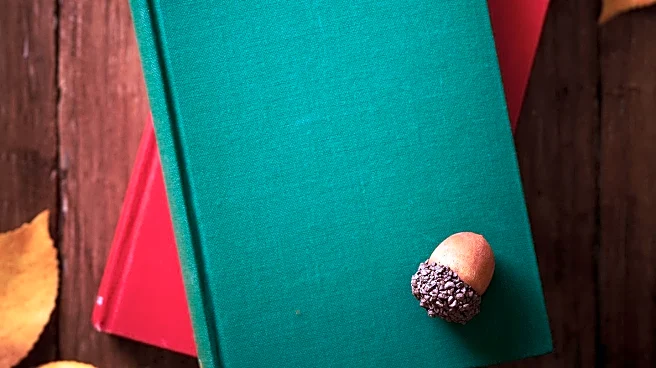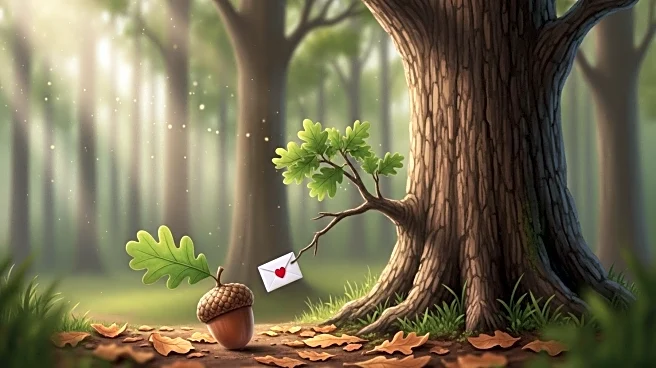What's Happening?
Joyce Sidman has released a new children's book titled 'Dear Acorn, (Love, Oak)', which features a collection of letter poems. These poems are unique in that they are written as letters from one entity to another, such as an oak tree to an acorn or a pebble to a river. The book aims to explore the interconnectedness of small and large things in nature. The idea for the book originated about 20 years ago when Sidman picked up an acorn and contemplated the potential of an entire oak tree residing within it. The book is illustrated by Melissa Sweet, who used a variety of materials, including hand-painted watercolor paper and collage techniques, to bring the poems to life.
Why It's Important?
The release of 'Dear Acorn, (Love, Oak)' is significant as it introduces young readers to the concept of interconnectedness in nature through creative storytelling. By using letter poems, Sidman encourages children to think about relationships and communication beyond human interactions. The book also highlights the importance of creativity in literature and art, as demonstrated by Sweet's innovative illustration techniques. This approach not only makes the book visually appealing but also serves as an educational tool that can inspire children to explore their own creativity and understanding of the natural world.
What's Next?
Following the release of 'Dear Acorn, (Love, Oak)', it is likely that the book will be incorporated into educational settings, such as schools and libraries, where it can be used to teach children about poetry, art, and nature. The book may also inspire similar works that use creative formats to explore complex themes in a way that is accessible to young audiences. Additionally, the collaboration between Sidman and Sweet could lead to future projects that continue to blend poetry and art in innovative ways.
Beyond the Headlines
The book's exploration of the relationship between small and large elements in nature can be seen as a metaphor for broader societal themes, such as the importance of individual contributions to the collective whole. This perspective can encourage readers to appreciate the value of small actions and their potential impact on larger systems. Furthermore, the book's artistic approach challenges traditional norms in children's literature, promoting a more inclusive and imaginative way of storytelling.










